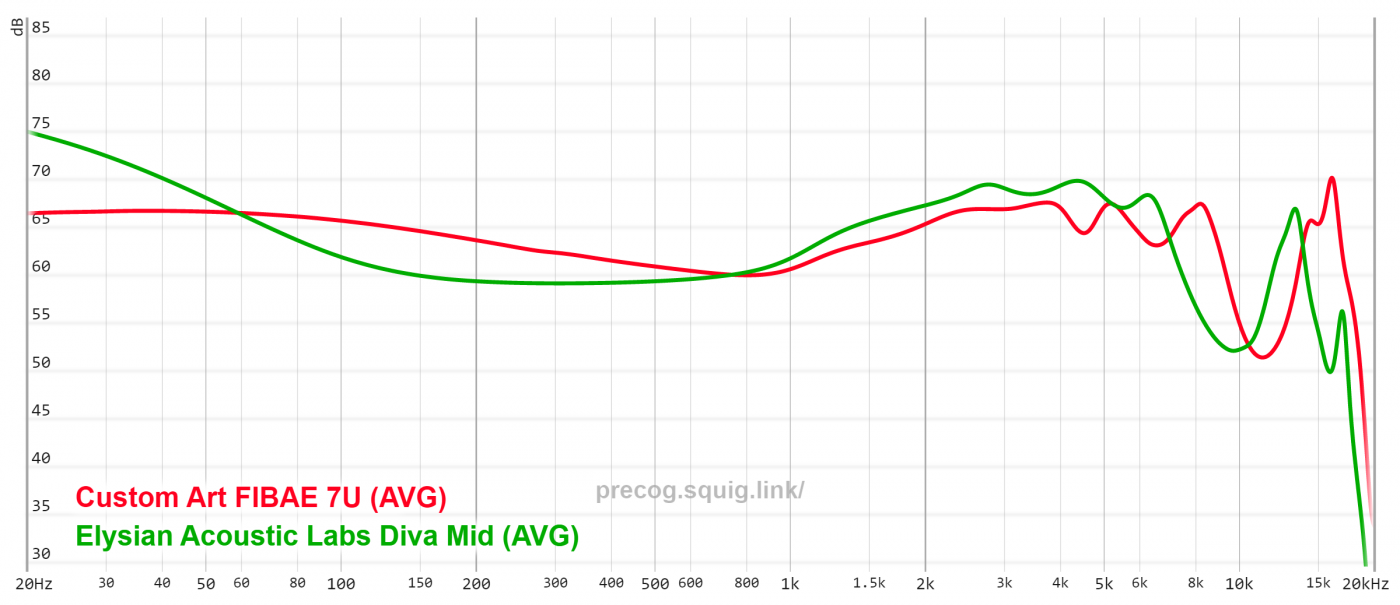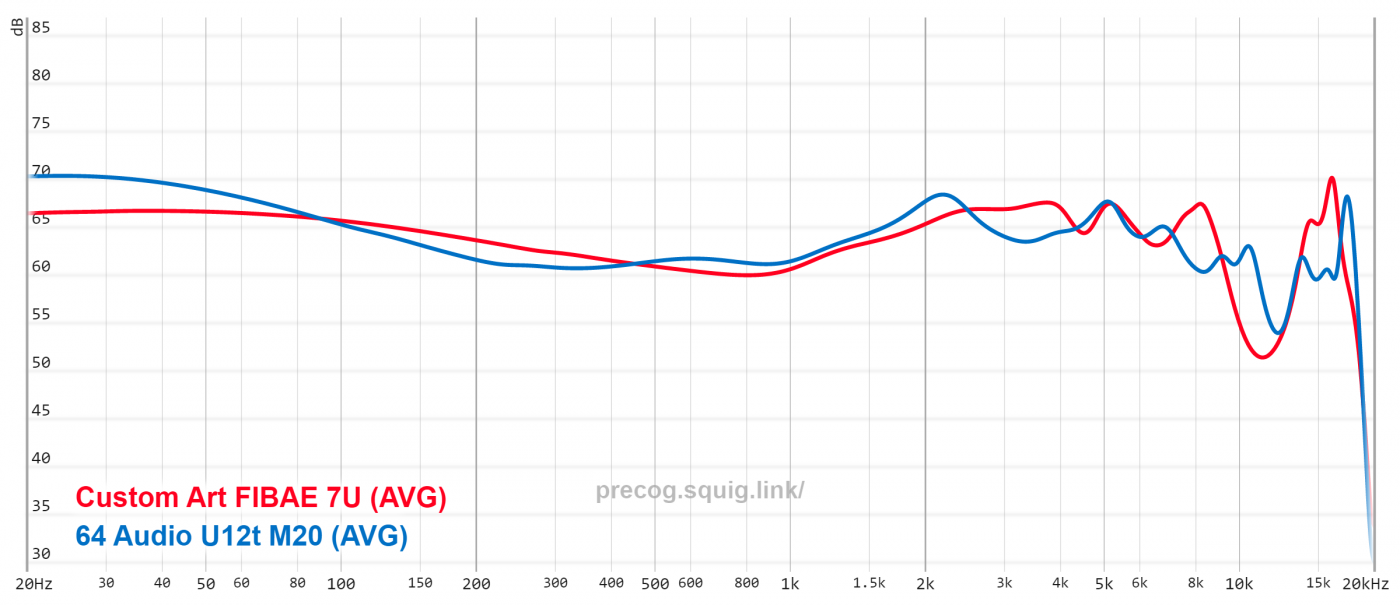Custom Art FIBAE 7U Review - Warm Greetings from Poland
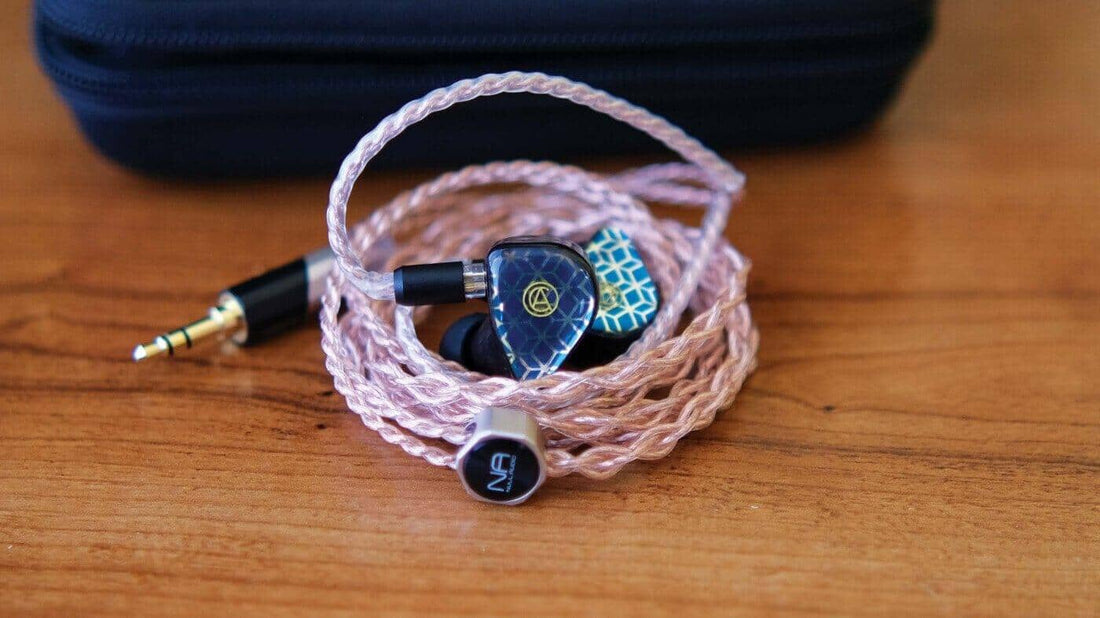
Custom Art FIBAE 7U Review
Written by Precogvision
Introduction
Custom Art is a small brand, founded in 2012, that hails from Warsaw, Poland. The brand is less well-known in the circles that I usually hang in; however, it has garnered a solid following in its home country and I've heard whispers now and again from friends about its wares. In particular, the brand's latest flagship IEM, the Fibae 7U (the "U" short for "unlimited"), has made something of a splash in the Head-Fi community. I've also had more than a couple of requests to give it a listen. My interest piqued, I reached out to Custom Art to see if I could get my ears on their 7BA, $1500 tour de force. I was told that it take about a month before they'd have my review unit ready to ship. In reality, I actually had it in my hands a week later; I can certainly appreciate setting unrealistic timeframes in this context! Quick logistics aside, in this review, I'll be sharing my thoughts on how I think the 7U actually sounds.
This unit was kindly provided for review by Piotr of Custom Art. The Fibae 7U can be purchased here. As always, what follows are my honest thoughts and opinions to the best of my ability.
Source & Drivability
All critical listening was done off of an iBasso DX300 and iPhone 13 Mini. The stock cable and stock silicone ear tips were used. The 7U is fairly easy to drive, and I had no issue getting it to my usual listening volumes (~70dB) with any of my sources. If you'd like to learn more about my listening methodology and beliefs in audio, then I would encourage you to check out this page.
In-the-Box
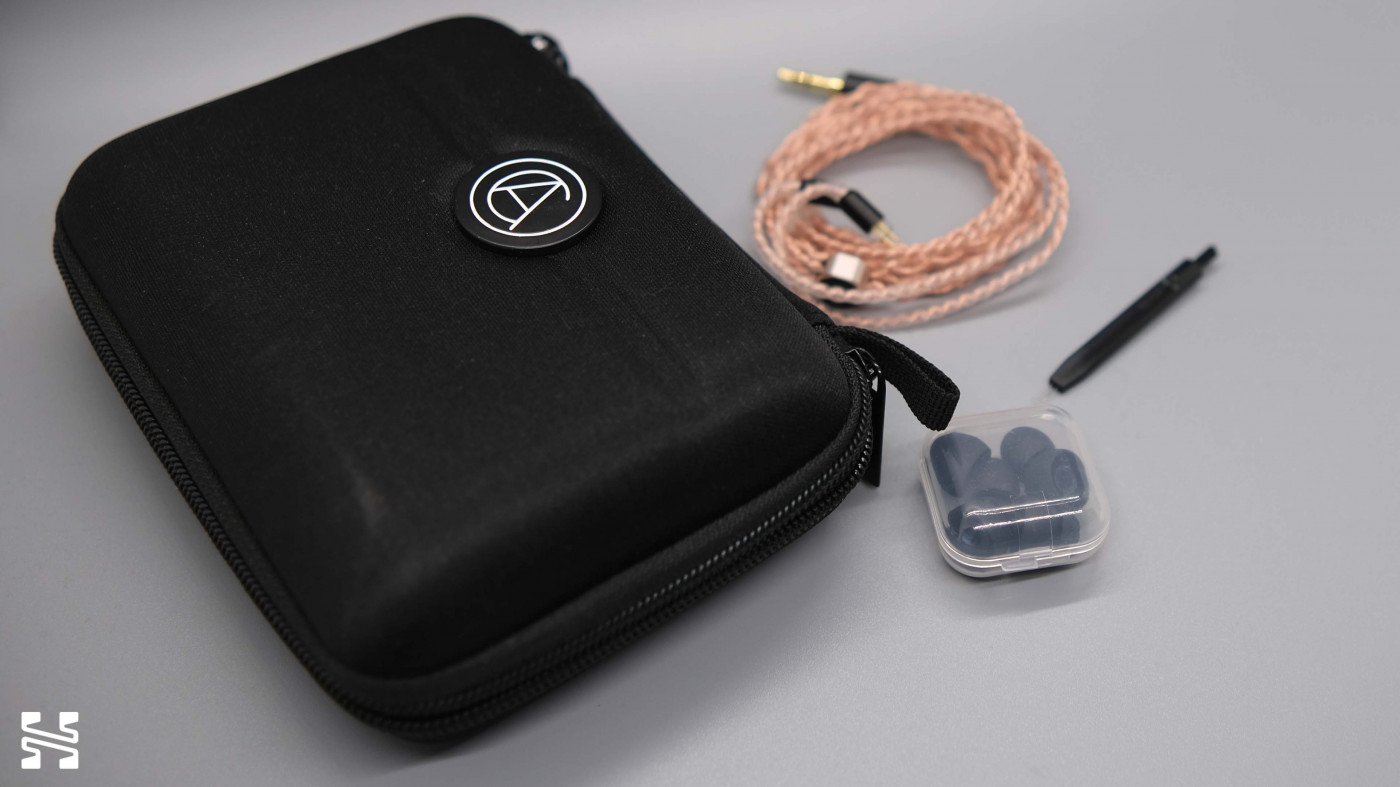
I received a review unit, so what was included with my unit might not be 100% representative of what commercial units will include. In any case, the 7U arrived in a lightweight cardboard box. Inside was a zippered soft case with a custom foam cutout and the following accessories:
- 4x pairs of silicone ear tips
- Cleaning tool
- 3.5mm 2-pin Null Audio Arete cable
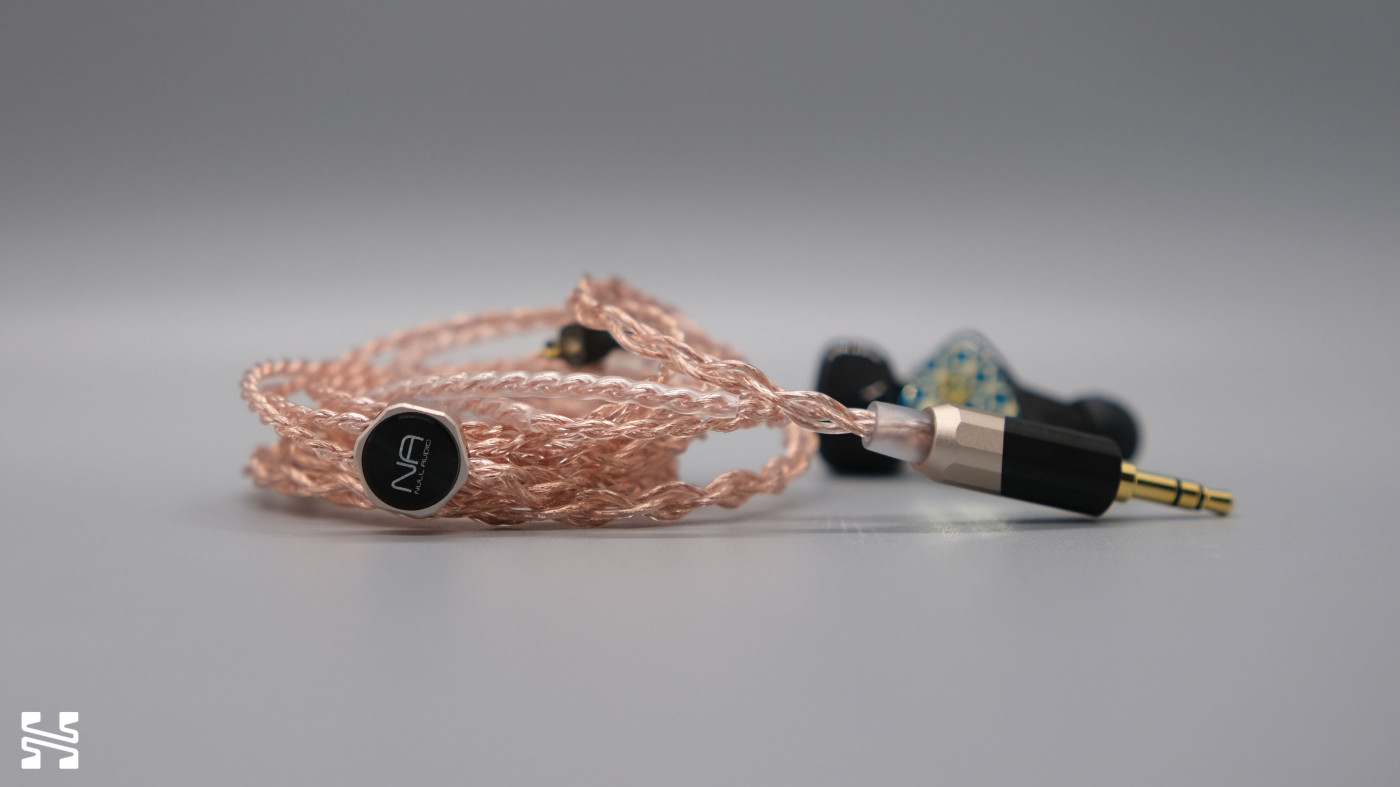
Null Audio is a Singaporean cable maker that I've been interested in for some time, so it was cool to finally get hands on one of their cables. The Arete cable included with the 7U appears to be the latest version with the updated hardware. In general, I found this to be a fairly nice cable, as I'm someone who prefers thinner and more pliable cables. Quality could have been a tad better, though: I observed some machining marks on the hardware, and the cinch had noticeable flaking of the plastic.
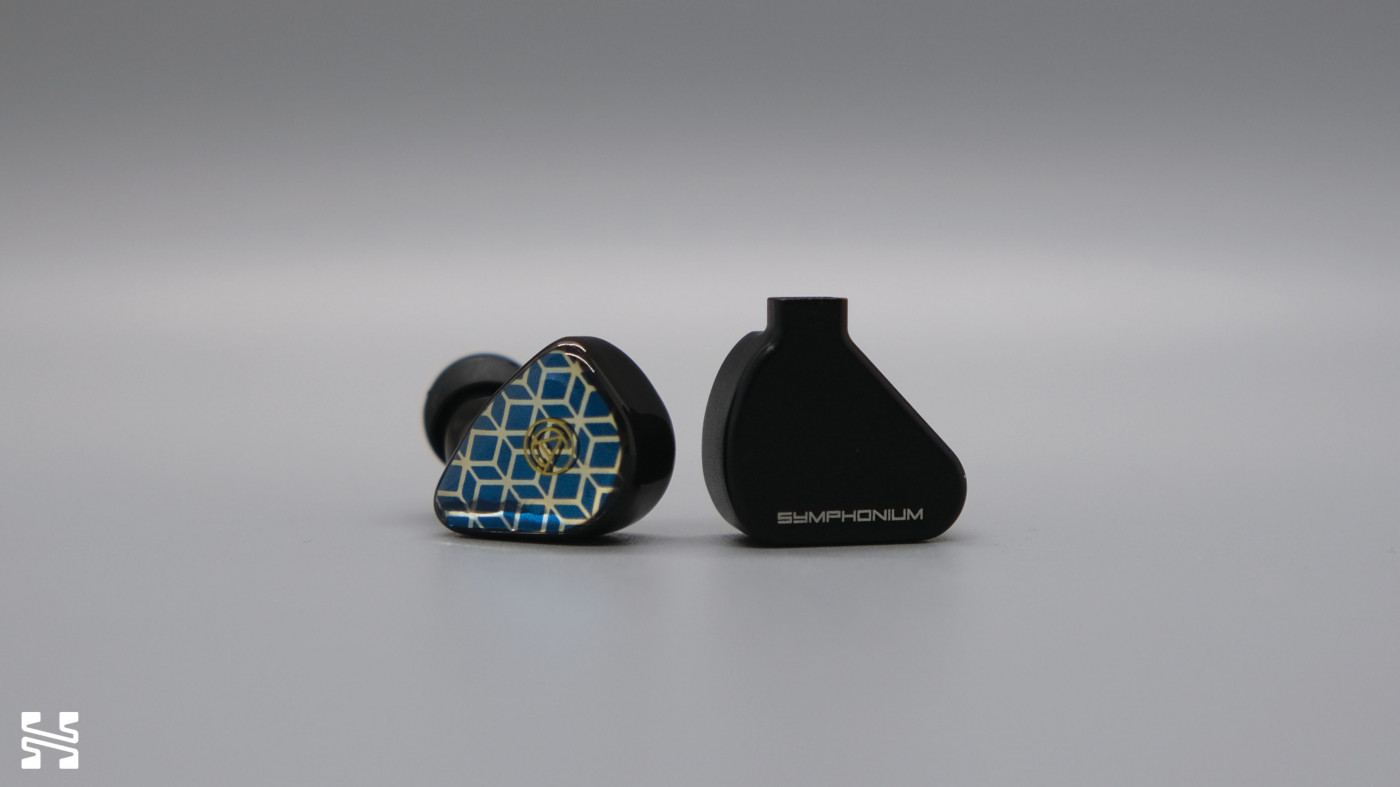
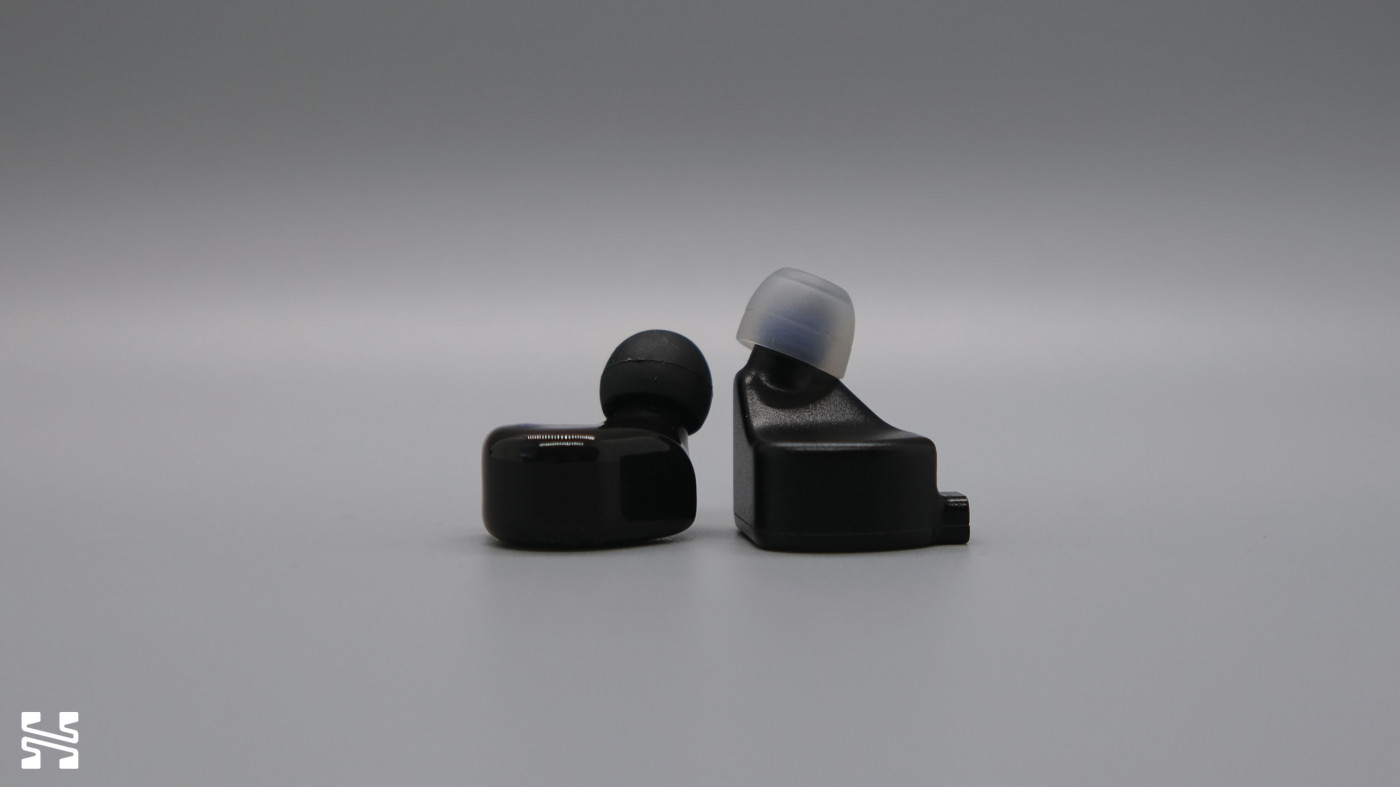
A size comparison to the venerable Symphonium Audio Helios which uses 4BAs. The 7U is noticeably smaller and more comfortable despite stacking on another three BA drivers.
The 7U itself is surprisingly small, much smaller than I was expecting from images of it that I’d seen online and given that it’s packing 7 BA drivers under the hood. It has something of a triangular shell that is reminiscent of the Tanchjim Oxygen. It does seem more secure in the ears than the aforementioned Oxygen, due to its lightweight acrylic construction and the smoother angle of the nozzle. Fit and comfort were of no issue for me, although these impressions will vary from user to user.
At this point, I should also mention that the 7U comes in both universal and CIEM (custom) versions. With the universal version, you'll get the faceplate that I received which is a pleasant crisscross of blue and silver textures with the CA logo emblazoned in gold. With the CIEM, you'll be afforded the luxury of choosing your own aesthetics. There are also some sound differences between the universal and CIEM formats, so do be aware that my sound analysis - seen below - will only apply to the universal version.
Sound Analysis
The measurement below was taken using a clone IEC-711 coupler. There is a resonance peak at 8kHz; as such, measurements after this point should not be considered entirely accurate. If you'd like to compare the 7U to other IEMs that I have measured, please see this link.
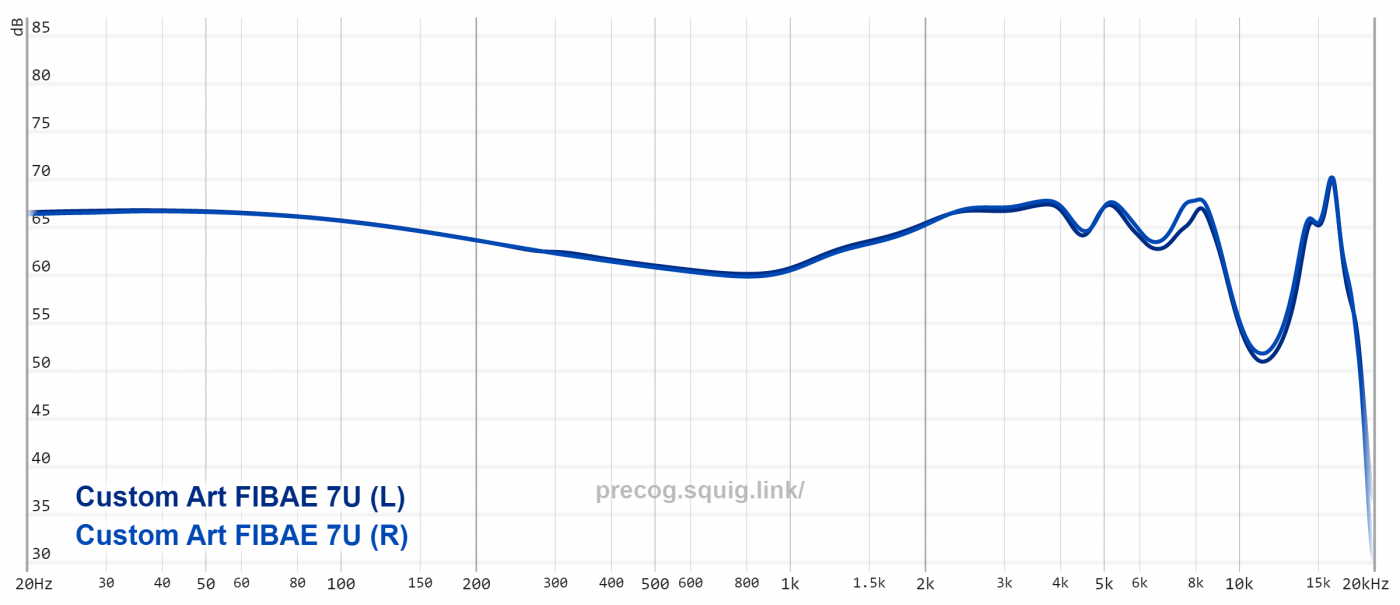
In general, I hear the 7U as having an airy, open presentation with an undertone of warmth.
Building that foundation of warmth, the bass of the 7U is above neutral and about equal parts sub-bass and mid-bass. Transient-wise, however, there is a slightly dry texture to its bass that might stem from the higher SPL leakage that BAs usually exhibit. The 7U does seem to struggle with conveying rumble and a sense of weight to bass instrumentation; this is apparent on a track such as Aimer’s “Even Heaven” for which there is a series of drops which token ~30Hz at 0:15. The prime advantage of this more light-footed bass response is, of course, the sense of ‘speed’ to quicker bass lines that is often associated with BA configurations. In any case, the bass here is acceptable for a BA configuration, but not much else of note to me.
The midrange of the 7U is fairly well-balanced. The mid-bass focus lends male vocals to more warmth. However, past 1kHz, the 7U has an appropriate amount of ear gain that continues to about 5kHz in the lower-treble. Female vocals sound a tad more forward. In particular, there is a crispness to their upper-harmonics that is characteristic of IEMs with an abundance of treble extension.
Now, speaking of which, the treble of the 7U merits more commentary. It's characteristic of unlidded BA tweeters with a sizzle-y quality to shakers and a splashy fade to the connection of cymbals. The splashiness is attributable to some valley after the ~10kHz region before the 7U exhibits a strong spike at ~15kHz. Compared to the 64A U12t which shares some of these qualities, the U12t has more energy at 5kHz (by virtue of its recession from 3-4kHz) which puts more weight behind the initial ‘thock’ of percussive hits. In general, then, the 7U has a "feathery" treble response wherein transients don't have much weight behind them. The good part is that it extends darn well; the bad part is that it doesn't sound natural at all. Listener mileage will also vary depending on how high up one can hear (it's somewhat fatiguing to me on certain tracks like Loona's "Eclipse") and whether one is willing to sacrifice a more natural treble response for more extension.
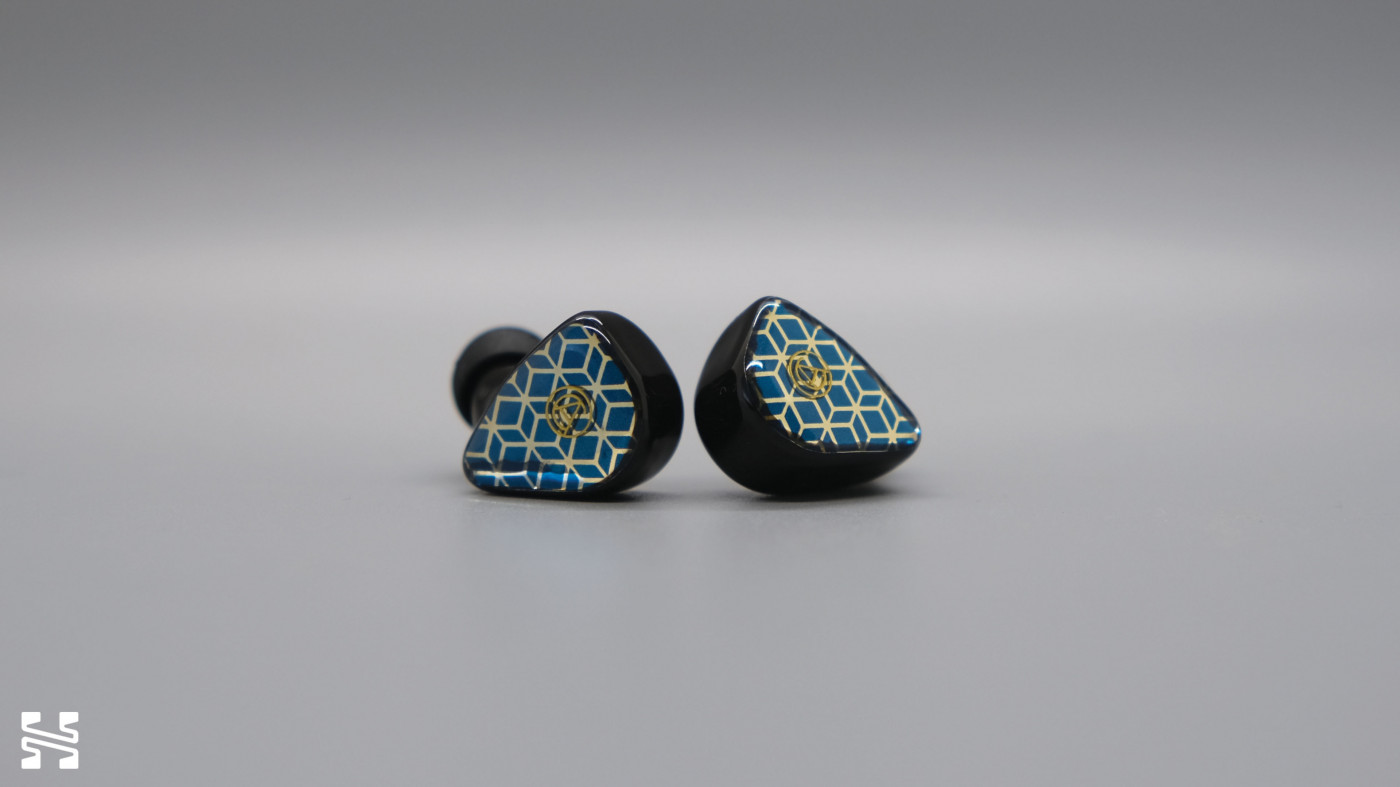
Technical Performance
However, a clear benefit of this less-than-linear treble response presents itself with the 7U's imaging. The contrast between recessed mid-treble and boosted upper-treble enhances the 7U's sense of space and layering capability; it sounds surprisingly open for what is such a small IEM physically. Center imaging on the 7U is also fairly palpable, easy to visualize and pinpoint in the head-stage. For a sense of detail, the 7U can generally be considered a good performer, probably in the ~$1000 range in my book. The tuning is not egregious enough to sound completely unnatural (thus diminishing perceived detail) and the excellent treble extension aids this impression. Dynamic contrast is typical of most multi-BA configurations; the 7U sounds upwards-compressed, perceptively skewing towards the loud points of tracks. I do not feel compelled to crank the volume when listening.
Comparisons
Versus the Elysian Diva ($1500), the Fibae 7U has a much more conventional BA presentation (from the nature of its bass response to its more "weightless" transients), and it puts a stronger emphasis on the 10kHz frequencies upwards. Like the Diva, then, the 7U does not have a particularly natural presentation - the distinction being that the 7U swings even further into left field. Where the 7U pulls ahead of the Diva is in imaging; it has a larger soundstage and greater sense of space between instruments due to its strong upper-treble boost at 15kHz. This is its main selling point compared to the Diva. The Diva would be the better all-rounder just by virtue of its tuning flexibility (it has three bass settings) and having a general edge in dynamics and resolution.
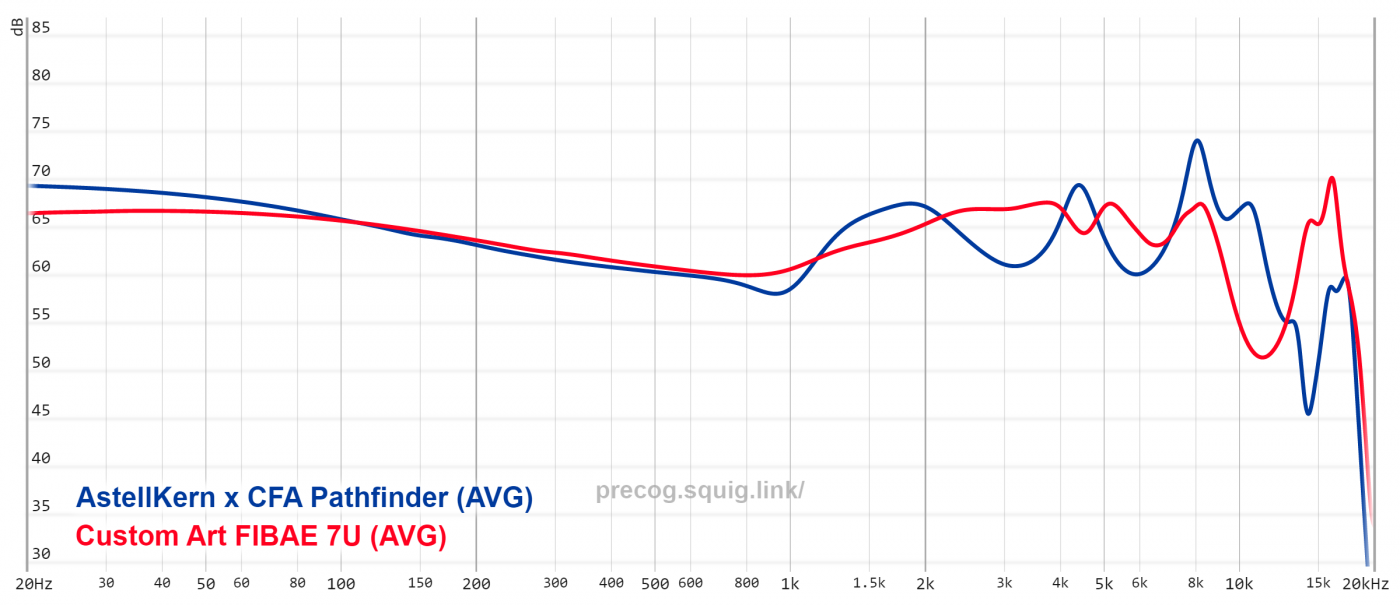
Versus the Pathfinder ($1900), the 7U actually sounds much more conventionally tuned. The Pathfinder is quite bass heavy and has a more palpable sense of bass impact, even if it's a bit bloated. The midrange of the 7U sounds more natural and mitigates the sibilance that the Pathfinder's suffers from in the upper-midrange. Both have good imaging that is achieved via peaks and valleys - the Pathfinder just egregiously more so and sounding darker. Overall, I think it's a pretty easy win for the 7U. I should also point out that the Pathfinder is extremely sensitive and likely sounds slightly different based on the output impedance of your source. That's not something that the 7U will have an issue with due to its linear impedance curve.
Versus the 64A U12t ($2000), the U12t has a more "grounded" presentation from the nature of its effortless transients and tonal colorations. The U12t's bass slams harder and is more sub-bass focused; moving upwards, it has a more relaxed flavor of upper-midrange while maintaining more stick impact at 5kHz. The Fibae 7U has a quicker presentation that sounds like it's out to grab attention, especially in tandem with the stronger emphasis at 15kHz. There's a noticeable gap for detail and a sense of macro-contrast (the U12t just sounds incredibly unique by virtue of its meticulously placed peaks and valleys), but the two mostly play ball for imaging. The 7U's no alternative to the U12t, but it's a comparison that I like to make for reference.
The Bottom Line
Overall, the 7U is good sounding IEM that I feel would benefit from some minor refinements. It doesn't usurp my expectations of what is possible at the $1500 price point; however, I still think there's a lot of potential from the technologies integrated in the 7U. I'd be interested to see the direction Piotr takes the super tweeters being used in the 7U, as well as if he's able to refine the vented BA woofers for more perceived impact and extension. As it is, there's something to be said about a smaller brand having the confidence to send out a review unit knowing my uber-critical standards, and I can certainly tip my hat off to that.
